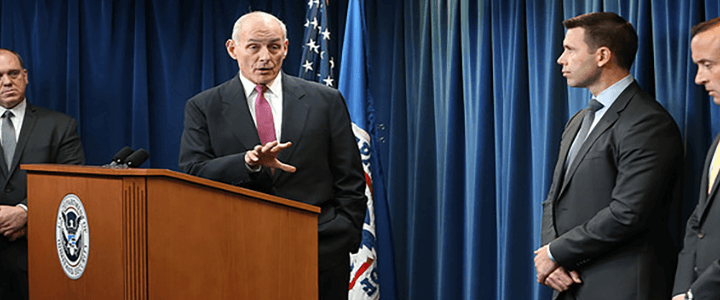When talking about the security clearance process, the major delays and current backlog tend to get all of the attention. But when it comes to what will actually improve the process (and an action that could be taken by individual agencies today), reciprocity and suitability determinations are a major hurdle to onboarding professionals into new positions.
This week the House Homeland Security Committee, Oversight and Management Efficiency subcommittee held a hearing on the suitability process at the Department of Homeland Security (DHS). A panel of experts with decades of experience working in and around government highlighted the failures of DHS to offer timely suitability determinations – meaning it may take months for a candidate to know if the organization would even consider them for the position. The real problem? Even if you’re currently working in one DHS office, you may have to wait those months just to transfer to another position or office – within the same agency.
“The opaqueness of the process leaves contractors, especially small firms, at a disadvantage,” noted Charles Allen, senior intelligence advisor at the Intelligence and National Security Alliance (INSA). “Some people, just for fitness, wait three to four months. Rarely is there a denial, but you have to wait months.”
Allen blamed the issues on the overall separateness of how many of the agencies operate – each with their own security offices, separate adjudicative guidelines, and stovepiped way of doing business. Across DHS, you have organizations who were formed or brought under the organization post 9/11, along with organizations such as the Customs Department, which has existed since the foundation for the country. Rather than operating as a cohesive unit, each organization operates – and issues its suitability determinations – independently.
What is Suitability?
Many people assume obtaining a security clearance is a golden ticket that should make you eligible for any job requiring access to classified information at that level. That’s a nice thought (and the goal of reciprocity), but the reality is all government positions are overlaid with a separate suitability process. That means you may actually have an active TS/SCI security clearance issued by the Department of Defense (DoD), and still have to submit separate suitability paperwork to go work a Secret clearance position with DHS.
Unfortunately, agencies are often not forthcoming about their suitability criteria, leaving candidates and companies into the dark as to what issues the suitability check is attempting to uncover. Individual agencies also have their own suitability guidelines, meaning issues that wouldn’t necessarily result in clearance denial do get a candidate denied the job.
“If a contractor has a secret or top secret clearance, the contractor should not need a separate fitness report,” said Allen.
The requirement for an additional fitness check – and the current delays in receiving a determination – keep both qualified contractors and civil servants off of the job.
“We’ll make an offer to a potential employee…we spend time and money to determine if they’re the right person for the job,” said Brandon LaBonte, president and CEO of ArdentMC, a government contractor with approximately 150 employees, 85 percent of them working for DHS. Following that determination, any offers are contingent on the individual receiving a favorable fitness determination from the government, he noted. “We lose one of every three candidates on the fitness determination,” said LaBonte – many candidate simply drop out, unwilling to wait three or six months to start the job. Inconsistencies are another major issue – some contractors reported waiting as long as 15 months – not for a security clearance – but for a suitability determination from DHS.
Panelists testified echoed the significant cost to both contractors and the federal government due to DHS’ lengthy suitability process. David Berteau, president and CEO of the Professional Services Council testified it had taken four years to complete his most recent clearance process took four years, during which time his paperwork was lost twice. That inefficiency is endemic of the problems across the government suitability and security clearance process.
“We frequently look at this as a trade off,” said Berteau. “If we have a faster process, we’re going to risk security.” He said that’s a false assumption, and the wrong way to look at fixing a broken system.
“You can actually speed the process up, create standards that make sense, create true reciprocity, and increase security,” said Berteau.
Improving DHS Suitability
The recommendations made by multiple panelists included:
- Eliminating fitness requirements to individuals who already have a security clearance.
- Create uniform fitness and suitability standards across DHS.
- Mandate suitability reciprocity across organizations.
- Create department-wide standards for all suitability determinations.
The final piece of the puzzle is information. It’s hard enough to attract cleared talent to government positions – it’s difficult to explain to candidates who get the job why they then have to wait months or a year to find out if they meet the government standard – with a government who provides no updates or indication of its process.
“I ask them for information on the process, they will not give it to me,” said LaBonte.
The lack of information is frustrating to applicants, but also a security issue for the agency. Berteau noted there is currently no requirement for agencies to share information on suitability determinations or reciprocity requests. That means there is no transparency on who made the cut at a certain organization, or who was denied.
“If you’re not good enough for one part, what makes it okay that you’re good enough for another part?” Berteau said.




